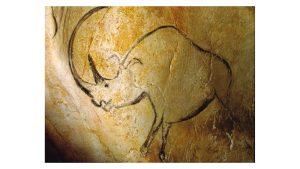
WHAT WE’VE LEARNED ABOUT CAVE ART – Part One: We all know that much of it is breathtakingly beautiful. According to some reports, after visiting the Altamira cave in Spain, a blown-away Picasso exclaimed, “After Altamira, all is decadence.” But here are some amazing facts about it: The oldest works of “art” are handprints in Tibet that may be 226,000 years old made very purposefully BY CHILDREN – probably Denisovan or Neanderthal (Zhang et al. 2021). Fernández-Navarrogical et al. (2022) determined that ~25% of the hand stencils in Spanish caves were made by children. The oldest Homo sapiens drawing is a cross-hatching on a piece of red ochre made more than 73,000 years ago in South Africa (Henshilwood et al. 2018). The oldest known cave painting is a Neanderthal’s 64,000-year-old, red hand stencil in Spain (Hoffmann et al. 2018). Nearly 350 caves that contain prehistoric art have been discovered in Europe, but a lot has been found elsewhere too. The most common subjects in cave paintings are large animals, such as horses, bison, aurochs, and deer, as well as tracings of human hands. The oldest representational painting – of a warty pig – is found in Indonesia and dates to at least 45,500 years (Brumm et al. 2021). All of these wonderful works of art help define the early edge of human abstract thinking. Next week, in Part Two, we’ll discuss how some, maybe most, of this art was likely made by women, and also, what’s NOT pictured in these works. Please Google the above-mentioned researchers’ names for more amazing details.
For more on paleo humans, check out the short, funny videos at Paleo Human Mysteries, which have mind-blowing facts:
Part I: https://www.youtube.com/watch?v=2OY98gHBAJc
Part II: https://www.youtube.com/watch?v=UEtNSuof_tc
